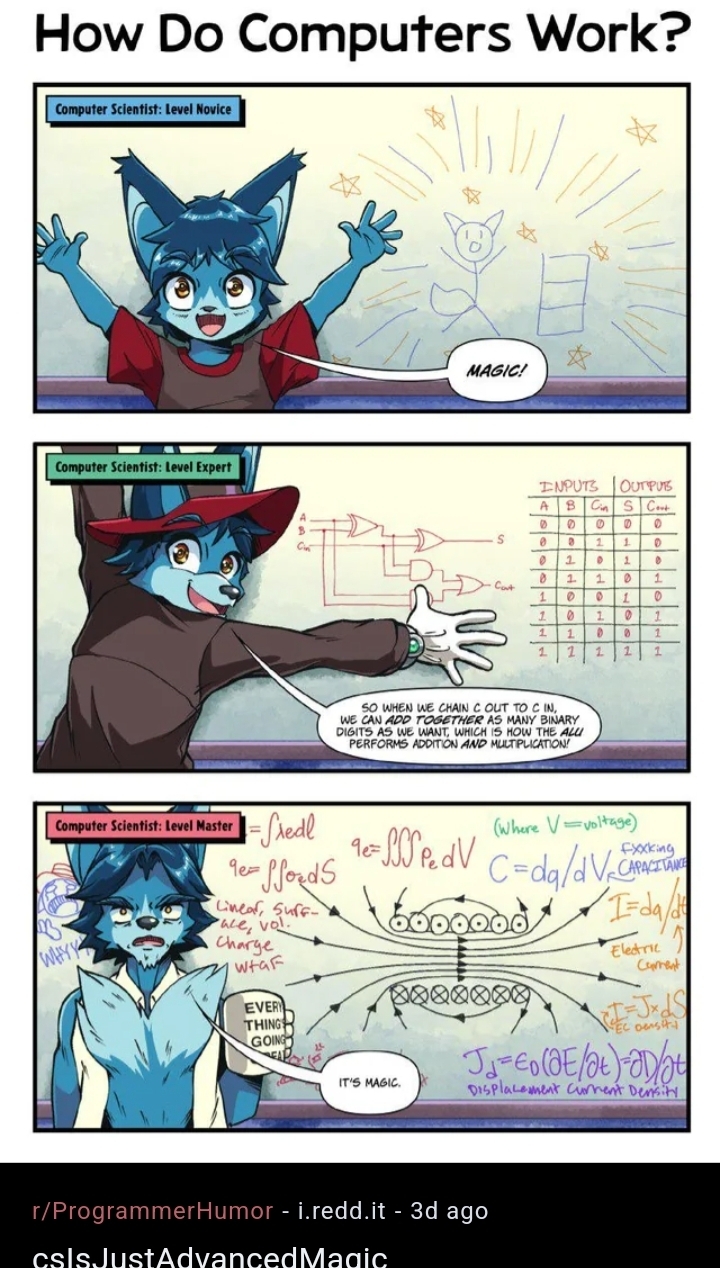this post was submitted on 27 Jul 2024
484 points (100.0% liked)
196
18204 readers
1377 users here now
Be sure to follow the rule before you head out.
Rule: You must post before you leave.
Other rules
Behavior rules:
- No bigotry (transphobia, racism, etc…)
- No genocide denial
- No support for authoritarian behaviour (incl. Tankies)
- No namecalling
- Accounts from lemmygrad.ml, threads.net, or hexbear.net are held to higher standards
- Other things seen as cleary bad
Posting rules:
- No AI generated content (DALL-E etc…)
- No advertisements
- No gore / violence
- Mutual aid posts are not allowed
NSFW: NSFW content is permitted but it must be tagged and have content warnings. Anything that doesn't adhere to this will be removed. Content warnings should be added like: [penis], [explicit description of sex]. Non-sexualized breasts of any gender are not considered inappropriate and therefore do not need to be blurred/tagged.
If you have any questions, feel free to contact us on our matrix channel or email.
Other 196's:
founded 2 years ago
MODERATORS
you are viewing a single comment's thread
view the rest of the comments
view the rest of the comments

You're talking the old CPU designs, not the current ones fighting tunneling effects or the work-in-progress photonics & 2D hybrids.
No, I am not sure that I am.
Photonic processing, whilst very cool and super exciting, is not a quantum thing... Maxwells equations are exceedingly classical.
As for the rest it's transistor design optimisation, enabled predominantly by materials science and ASMLs EUV tech I guess:), but still exploits the same underlying 'quantum 1.0' physics.
Spintronics (which could be what you mean by 2D) is for sure in-between (1.5?), leveraging spin for low energy compute.
Quantum 2.0 is systems exploiting entanglement and superposition - i.e. qubits in a QPU (and a few quantum sensing applications).